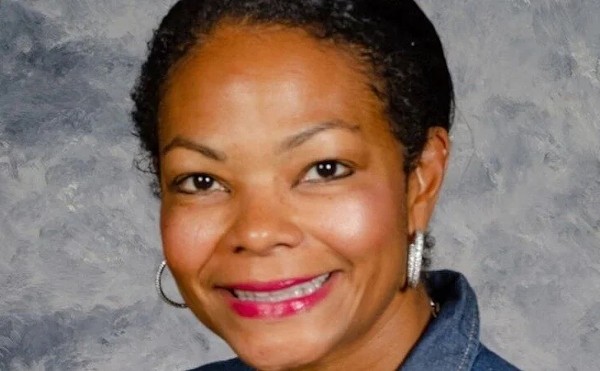Jordan Kaltman and Ryan Catignani have repeated the story so many times that it comes easy now, three years on. Isn't that the job of survivors -- to share their stories, to make sure people remember?
The details have been verified -- witnessed by a couple thousand people, recorded for the newspapers -- yet it's still strange to think it actually happened. So implausible. So sharply at odds with recent history. So contrary to all empirical evidence that it begs to be said out loud: There once was a glorious week for Oberlin College football.
Sure, laugh. It sounds funny. Oberlin. Football. Victory. The words don't go together. Hell, they don't even belong near each other. This is a school, after all, that not so long ago lost a football game five days before the scheduled kickoff; there weren't enough players to even compete in the game.
But it's true. It was three years ago, on September 6, 1997, when everything, finally came together. Back then, Oberlin hadn't won a football game in more than four years, since the second-to-last outing of the 1992 season. Then, just as now, the school was in the midst of the nation's longest losing streak, within smelling distance of the NCAA Division III football consecutive-loss record.
But the first game of the '97 season, against Thiel College, would be different. Over the summer, a group of players had decided that, if they did nothing else as Oberlin Yeomen, they would win that game. During two-a-day practices that fall, it was the only thing anyone talked about.
"Every day it was beat Thiel, beat Thiel, beat Thiel," says Catignani, who started his college football career playing in that game as a freshman. "I think we started preparing for Thiel the first week of camp."
By the game's midpoint, with the score tied 10-10, word spread throughout the Oberlin campus that, yes indeed, it . . . just . . . might . . . happen. During the first half, the stands at Dill Field had been populated with a few hundred of the usual suspects: parents, locals, and a smattering of students. But as the players, all 29 of them, emerged from the locker room for the second half, they were greeted with what, for an Oberlin game, was an unusual sight: fans. Rabid ones, actually. The players could see them leaning over the tunnel where they ran onto the field, screaming for the team. One guy had painted his body in crimson and gold, the school colors.
After 40 consecutive losses, however, victory doesn't come without a little drama. Early in the fourth quarter, with the game still tied 10-10, a Thiel runner broke through the Oberlin defense for a 29-yard touchdown run, and the Yeomen found themselves down 17-10.
But with a little over nine minutes remaining in the game, fortune finally shot a smirk Oberlin's way. The Yeomen defense recovered a fumble on Thiel's 42-yard line. A few plays later, Oberlin quarterback James Parker's 27-yard pass to wide receiver Anthony Johnson put the Yeomen on the 5-yard line. On the next play, Parker hit John Singleton in the end zone to make it 17-16. Oberlin's coach, Pete Peterson, decided to go for the two-point conversion. Once again, Parker and Singleton hooked up for the score, finally giving the Yeomen the lead, 18-17.
When the clock wound down, Peterson crossed the field, shook hands with the Thiel head coach, and walked into the Oberlin locker room. He soon realized he was the only one there. Everyone else was still on the field, where fans had rushed down to celebrate with the team.
The weight had been lifted. The drought was over. Hard to believe, though, that not everyone was ready to herald a new era of Oberlin football. As players basked in their triumph in the locker room after the game, an alumnus who had been on the team that beat Kenyon College four years before -- the last time the Yeomen had won -- asked to address the team. He turned off the blaring music and told everyone to be quiet.
"I really don't want to ruin your moment, I know you guys really don't want to hear this right now, but four years ago, I was in this very same spot when we beat Kenyon," Catignani recalls the former player saying. "We got all high on ourselves. Little did we know that we were starting the next 40-game losing streak. Don't let it happen to you."
Says Catignani: "We were like 'Yeah, whatever. Get out of our locker room.'"
Oberlin College sits just 35 miles from downtown Cleveland, nestled in the rural embrace of central Lorain County. The open, spacious campus is dotted with weathered buildings -- the oldest ones with distinctive crimson-tiled roofs, laid out around three sides of a huge central green space, Tappan Square. A small downtown business district -- with all the usual college-town staples: a bookstore, movie theater, and a couple of coffee shops -- heads south from the one corner of the square not absorbed by the school.
Each year, Oberlin enrolls more than 700 of the best and brightest students from around the country. (Only 10 percent of the student body comes from Ohio.) Aside from the $32,000 yearly cost, it's not difficult to understand why they come. Oberlin has a world-renowned conservatory of music. It has a damn-near-permanent place on U.S. News & World Report's annual list of top liberal arts colleges. It has prominent faculty. It has a track record of sending more kids to get Ph.D.s than any other four-year college in the country. And it has an intense atmosphere that attracts some of the most outspoken, intellectually curious students in the nation, a "bastion of independent thinking and uncommon ideas," as one national college guide calls it.
Over the last quarter-century, Oberlin has also had one of the worst college athletics programs in the nation. And nothing reflects that futility more than the school's efforts in the highest-profile college sport of all: football.
Actually, Oberlin football hasn't been so much a program as a train wreck on turf, fielding teams that have set the gold standard in goddamn awful play. (An example: In 1991 the Yeomen scored 19 points. Not in a game. They scored 19 points all year, which was actually better than 1994's season output of 10.)
During the 1990s alone, Oberlin managed to compile 95 losses while scratching out just three victories, for a winning percentage of .031 -- a figure that makes the Washington Generals look like a successful basketball franchise.
It was supposed to be different this year. After an aggressive recruitment effort under second-year head coach Jeff Ramsey during the off-season, the football team started the year with more than 50 players -- double the number from 1999. The message was clear: Not getting blown out was no longer the goal of Oberlin football. The team was expected to compete and, at some point, even win. It was revolutionary, really.
One problem: It didn't happen. Once again, the Yeomen went 0-10, stretching out their winless tally to 39 games. Once again, they owned the nation's longest losing streak. Once again, the question came: Why even have a team?
See, for years -- as far back as most people around Oberlin can remember -- there has been one constant around Tappan Square: Most students and faculty couldn't care less about football. And winning isn't necessarily going to change that. It's not exactly a "build it and they will come" kind of place. It's more like "build it and they might stop by . . . if they don't have to study . . . or they're not getting coffee . . . or they don't have an Ultimate Frisbee match."
These days, Oberlin is in the midst of nothing less than a rescue operation. A mission to justify football's continued existence at a place that's long been the yardstick for how bad it can be. Nobody calls it that, of course, but that's exactly what's happening -- one last push to see if the school's long tradition of abject failure can finally be scuttled on the high ground of glorious mediocrity.
The folks who founded Oberlin probably never thought about such trifling things. When they carved the campus out of Ohio swampland 167 years ago, they were too busy trying to change the world. It was 1833, and they founded Oberlin with the notion that perfection -- Christian perfection, specifically -- could be achieved right here on earth. In pursuing that goal, they figured God's female emissaries might be just as valuable as His male ones, so they opened the school's doors to women, and Oberlin became the first coeducational college in the country. A couple of years later, in 1835, Oberlin took an even more radical step, deciding to admit African Americans. The move was spurred by rising antislavery feelings in the North and the subsequent promises by wealthy abolitionists to give the school money if it admitted blacks. It did, and by the time the turn of the century rolled around, nearly half of all African Americans who had graduated from college in the United States had gone to school at Oberlin.
Not everyone was enamored of the school's way of doing things, however. Oberlin's radicalism was seen as such an affront to Ohio's good name that the state legislature tried to revoke its charter. Six times.
Indeed, Oberlin has always been known as a place that's more than a little bit different. As former history professor Geoffrey Blodgett describes it in a book he wrote on local history, Oberlin is "10 miles from everywhere. Ten miles from Lorain, 10 miles from Elyria, 10 miles from original sin, 10 miles from normal American society."
That apparently isn't so far that Oberlin students -- even 100 years ago -- didn't find time for some recreation, when they weren't making the world a better place. Despite protestations by some people around campus about its brutality, the college's first football team was fielded back in 1891. A year later, it would claim its first undefeated season, along the way beating the University of Michigan once and Ohio State twice. That year, the team was led by a talented player-coach named John W. Heisman (yes, that Heisman).
Heisman would coach another winning team, in 1894, but the heyday of Oberlin football would actually come a few years later and span the entire first half of the 20th century. The school went undefeated in 1921, 1924, 1943, and 1945, while rolling up 12 single-loss seasons between 1900 and 1950. Oberlin's biggest single victory -- as far as alums are concerned -- came during 1921's perfect season, when the Yeomen beat Ohio State 7-6. To this day, that victory remains the last time another Ohio school has beaten Ohio State.
The slide into Oberlin's long reign of ineptitude came not long after World War II, when the liberalization of rules regarding substitutions expanded the number of players needed to field competitive teams. Prior to that, players were forced to play both offense and defense, an advantage for a small school like Oberlin.
"When I started playing at Oberlin, it was a matter of a rather tight set of substitution regulations," says Blodgett, who played on the 1950 Oberlin football team that went 7-1. "Over the next few years, the substitution rules were greatly relaxed, and the so-called two-platoon system came in, and that required a larger number of competent players than the older system did. I think that was the main reason why Oberlin began to feel stretched."
Indeed, by the time Blodgett came back to teach at Oberlin in 1960 -- after serving in the military and going to graduate school -- the football team was familiar with failure. From 1951 to 1999, Oberlin football would account for just two winning seasons, in 1963 and 1974, compiling a record over those years of 93-324 (.223).
Almost a third of those losses would come in the last 10 years -- a period of such conspicuous ineffectiveness that Oberlin was a running joke among the nation's sportswriters. And that was when the school could actually find enough players to play, which wasn't always a sure thing. There was the time in 1992, for example, when Oberlin lost to Wittenberg 6-0 before a single whistle ever blew. The Yeomen had to forfeit, because they had only 16 healthy players after a 56-0 blowout against Allegheny the week before. (Yes, that rumbling you heard was the cold, dead body of Coach Heisman spinning in his grave.)
In some cases, not showing up would have been the wisest course of action. Maybe then Oberlin could have avoided that nail-biter against Wooster in 1999, when they lost 71-0, or the 1998 game against Allegheny that went down to the wire before Oberlin let it slip away, again 71-0. Then there was the barnburner against Wittenberg in '97 -- the one that was oh so close, until Oberlin fell behind 74-0. Of course, who can forget that near-miss in '96, when the Yeomen lost by just 57 points, again to Wittenberg? Almost as tight was the game against Wittenberg the year before, when the Tigers squeaked by Oberlin, 77-3. And how can we leave out '94's heartbreaker against Allegheny, when Oberlin came within 83 points of victory?
Nor was it just the on-field efforts that were a source of shame. In the early '90s, the school was almost sanctioned by the NCAA after the student newspaper, The Oberlin Review, revealed that the play clock at home games would often start before the ball was snapped -- a not-so-subtle effort to speed the game along.
Last year, the team's games didn't even count in North Coast Athletic Conference play. Due to a lack of players the year before, the school had requested a waiver so they wouldn't have to play NCAC powers Wittenberg and Allegheny during the 1999 season. The team wasn't included in the final NCAC standings, and players could not be considered for post-season awards.
The man given the unenviable task of turning all this around is Jeff Ramsey, a thin, athletic-looking Californian with an affable, deliberate manner. Hired in January 1999 to take over for Pete Peterson (who had compiled a 1-48 record after five years at Oberlin), Ramsey had been an assistant coach at Sonoma State, Marietta, and the University of Nevada-Reno.
Perhaps more important, Ramsey knew full well what he was getting into when he accepted the position. He and his wife, who is the school's women's volleyball coach, had moved to Oberlin in 1995 to be close to her family, so he was familiar with the school's funky vibe and the football program's bleak history. Even so, he had wanted to get back into coaching ever since he left Sonoma State, and he jumped at the chance to run his own program.
Still, it was a long way from his playing days as a wide receiver at Division II power UC-Davis, where more than 100 freshmen would come out the first day of practice, when the school was a consistent conference champion. At Ramsey's first meeting with his Oberlin squad, 14 guys showed up. With only two months to recruit after he was hired, Ramsey scraped and scrambled to get as many new players as possible, including a couple of guys who had never played organized football before. He ended up with a total of 27, less than half the average of most Division III teams. He went 0-10.
With his easygoing manner, Ramsey is a natural recruiter, and he and his staff made an intense effort during the off-season to bring in as many new faces as possible. This fall, when school started, more than 50 kids showed up the first day of practice. More than 30 are freshmen.
"It's been night and day," says Catignani about the football team this year compared to years past. "I've always said that I can't wait for football to be over, and now I'm kinda like 'Man, if I had one more year left, I'd probably be seeing some wins.'"
Catignani hadn't even thought about playing college football, when a coach from Oberlin called during his senior year at Toledo's Ottawa Hills High School. His team played in Division VI, Ohio's smallest high-school football bracket -- not exactly the breeding ground for college recruits. The lure of playing collegiate football, though -- especially at a school as academically prestigious as Oberlin -- was too good to pass up. He never figured his first game would be his last victory.
"I've enjoyed little to no success here," he says. "But at the end of this year, I will have started 40 college football games. I don't care how good you are, there are not a lot of people who can say that. It's been a lot of fun -- especially this past year, because we've been so competitive."
Oberlin did have its chances this year. There were at least three games the Yeomen could easily have won. A defeat is a defeat, of course, but anyone who says losing to Hiram by one point this year was the same as losing 71-0 to Wooster in 1999 has never played football. For years, Oberlin wouldn't just lose; it would get manhandled. Now at least they belonged on the same field.
Against Hiram, Oberlin led for much of the game before an errant throw by sophomore quarterback Chris Moffat, midway through the third quarter, was intercepted and returned for a touchdown. Hiram 9, Oberlin 8.
Against Kenyon, the Oberlin defense held the Lords' offense to 12 points, yet the Yeomen offense couldn't put any points on the board. Kenyon 12, Oberlin 0.
Against Denison, it was the same story. The defense couldn't have played better -- holding the Big Red offense to minus 10 yards rushing, sacking the quarterback 15 times, and returning one interception for a touchdown. But once again, the offense couldn't put any points of its own on the board. Denison 14, Oberlin 6.
"Offensively, to sum up the season, we moved the ball, but we couldn't finish," says Ramsey, sitting in his office in Philips gymnasium, videotapes strewn about, drawings from his kids on the walls, his iMac screen filled by a spreadsheet with the names of high-school players he and his staff are tracking for recruitment. "We just lacked the wherewithal and the focus to finish a drive, to make a play when it counted."
He has already begun recruiting players for next year -- a process that is perhaps the most challenging aspect of trying to win at Oberlin. As one of the most academically demanding schools in the country, Oberlin doesn't take just any athlete. A 2.0 GPA and a 17 on the ACT ain't going to cut it here. The average SAT scores for athletes at Oberlin are higher than those at Stanford. In addition, because Oberlin is a Division III school, it can't give athletic scholarships for its $32,000-a-year price tag.
But those are just the numbers. There are, of course, the other factors that make it hard for coaches to recruit. Because, for all its academic prestige, for all the great professors and engaging classmates, there is a certain sense of pride at Oberlin about being so otherworldly when it comes to college sports. It is, in a sense, a sort of four-year geek fantasy camp, a place where the stereotypical social order is refreshingly bent, where band members are cool and jocks are suspect -- a place where some students would rather set themselves on fire than support a football team.
"The people involved in athletics are extremely absorbed in them, but the people outside of that don't seem to care at all," says Nick Stillman, a senior from Portland, Maine, who is the co-editor-in-chief of the student newspaper. "I mean, I don't care, because for the most part, I know we're going to lose."
Take a football game itself. For anyone familiar with the traditional rituals of high-school and college football, an Oberlin game is a singularly weird experience. On a cold but sunny late-October day at Dill Field, a small crowd gathers for the game against Wooster -- mostly parents and alumni and a few locals who come out for a little hometown entertainment. There are some students, but many drift in and out of the stadium throughout the game. (It goes without saying that there's no charge to get in. One suspects the logic: Who in their right mind would pay to watch Oberlin play football?)
The loudest cheers come at halftime. Not for the team, which is, of course, losing, but for the Oberlin marching band, a ragtag group of 16 whose uniforms are black T-shirts and jeans. During the halftime show, the band is accompanied by a troupe of zaftig flagbearers who, on this particular day, perform to music from The Full Monty. A woman wearing clothing made from some sort of petroleum-based product is directing the whole affair. The finale of the show, performed to "The Stripper," has the flagbearers whip off their ties and button-down shirts to reveal the message "WE LOVE O.C." on the white T-shirts they're wearing underneath. The crowd goes nuts.
Part of the reason for all that conspicuous indifference to sports is just time, says Stillman. Unless you're participating, the academic demands and the social dynamics at Oberlin are such that it would be unusual for a student to take three hours in the middle of the day to watch a football game.
Then there is also the Animal Farm factor. "In many ways, many Oberlin students, in high school, didn't really buy into the conventional culture," says physics professor John Scofield. "They weren't part of those 20 percent of the students who were cheerleaders and student-body presidents and homecoming kings, and so, when they come here, there's almost a flipping of the social structure. Now they are the dominant culture. In some sense, there's a bit of Orwell's Animal Farm going on."
Stillman agrees. "I think a big part of the reason people come here is to escape the stereotypical high-school environment," he says. "The whole social hierarchy is a big part of it."
"I think there's a certain pride at Oberlin that we're not like the rest of the world, we're not like the rest of Ohio, we're not like the rest of the nation in thinking that athletics is really, really important," says Scofield. "There are certain Division I schools where athletics drives the institution, and that's unfortunate. And so there is a certain pride at Oberlin that we're not like that."
No, no worry here about getting confused with the likes of Ohio State. This is a place, after all, where one of the most popular outings all year is an event put on by the Lesbian Gay Bisexual Union, a ball for which about half the student body shows up in drag. It is a place where students formed a human blockade of the administration building last year because they thought that President Nancy S. Dye hadn't allowed enough student input in the process of hiring a new dean of students.
A blockade. Over input.
In many ways, Oberlin is a sort of antidote to a Big Ten university, where athletes are celebrities and any sense of perspective about football was abandoned about the same time as the leather helmet. Most folks at the school think this is a good thing, but it also makes recruiting football players to Oberlin a bit more challenging.
"This is basically how I see this school," says Catignani. "If you want to speak stereotypically, the stereotypical high school -- with the jocks and the nerds and the band people and everything -- the people who got picked on in high school by the jocks are now all at this school. So the popular majority in high school is now the unpopular minority here. And these people love it."
Ramsey doesn't exactly jump for joy when such things are mentioned. He says it's the program's job to fit within the philosophy of the school, not the other way around. And when it comes down to deciding where a kid's going to play, it's going to be the school and the students that make the difference, not the football program. "If you really have to convince a kid, it's not going to happen. The true tale to tell will be told by the students on campus . . . When it comes down to it, they're still college students. And [new football players] will find out there's people just like them."
Of course, all that effort and all those struggles may be moot, if the team doesn't start winning at least some games in the next few years. For all the positive talk about the renaissance of Oberlin football, the new players and renewed efforts, there is also a scent of disquiet about it, a feeling that it will work this time because it has to.
It's not as if the prospect of dropping football at Oberlin is a new idea. In 1978 a faculty committee split evenly on whether to drop the program and use the money to expand women's athletics. Football was spared, but it was hardly a sentimental issue. The most persuasive argument in favor of the program, recalls historian Blodgett, was the fear that, without it, some alumni would stop giving money to the school.
Rumblings about the failures and the fate of the program have been part of life on campus ever since. It's not so much hostility toward football, says Blodgett, as it is a matter of priorities. "What I think is the case is that Oberlin College administrators are tugged by an enormous array of competing pressures, and they have to be responsive to the ones that are most insistent," he says. "It was an understandable situation, given the nature of Oberlin, in which intercollegiate athletics did not rank high in the minds of a majority of students and a majority of faculty members."
Among the administration, at least, that ambivalence began to change with the hiring of Dye as president of the college in 1994. An outspoken supporter of college athletics, Dye thawed what had been a chilly relationship between football supporters and the president's office during the previous two administrations.
Perhaps the most important decision was to hire Michael Muska as the school's athletic director three years ago. Muska, who is believed to be the first openly gay athletic director in collegiate athletics and who had previously worked as an assistant athletic director at Brown, was given a mandate to shake up the athletic department, to put a renewed emphasis on success. "I don't think, if that had not been the case, I would have taken the job," he says. "President Dye and Clayton Koppes, the dean of the college, said that this is something they wanted to change. The question was, how do you go about changing it?"
You start firing people, for starters. Under Muska's tenure, there has been a widespread housecleaning of coaches. And the most conspicuous change, naturally, came in the football program.
The case for football is a simple one to make, says Muska. Everything else at the school is done with a commitment toward excellence, so why not collegiate athletics -- football, in particular?
Oberlin will never be a football factory, he says, but there should be an expectation that the team will compete in every game and will have a shot at a decent record. "I think the decision should be, if you're going to do something, you should try and do it well. The issue here is that we have a conservatory that is world-class, which we're proud of, that we've made a commitment to. We either make the decision to have an athletic program and be serious about it or we have the kind of program, a non-varsity athletic program, where people just go out and play in the afternoon whenever they feel like it."
Only after the school makes a serious effort to have a successful program can it legitimately consider the program's value, he says. "I think my philosophy in terms of coming here was, we've got to give it a real effort and a real push before we even have that discussion" about dropping football. "I think hiring Jeff and having a commitment from above to say, okay, let's see what we can do with football here, is really the proof of whether we can do it or not. I guess I have a belief that, if Jeff can't turn it around, then I think we have to sit down and evaluate where do we go with football."
Sure, laugh. It sounds funny. Success. Oberlin. Football. The words don't go together. Soon enough, the folks around Tappan Square will find out if they ever will.













